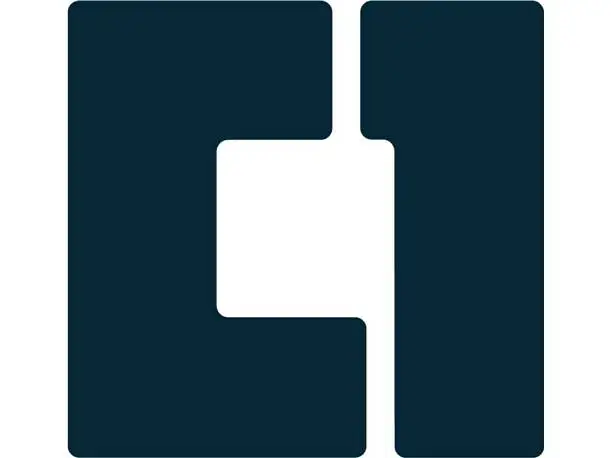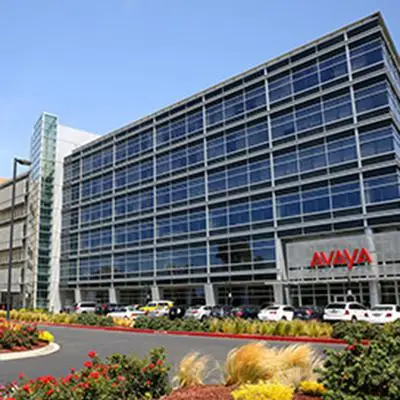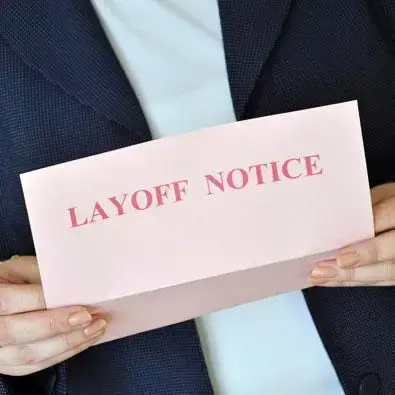ConvergeOne Files For Chapter 11 Bankruptcy: 10 Things To Know
The Minnesota company managed to thrive with the help of low-cost loans, which are no longer available except at significantly higher interest rates, while the bankruptcy of its largest vendor partner, a company whose name was not revealed but which CRN has identified as part of this slideshow, cast a shadow on the company’s solution development and on the willingness of its customers to engage with it.

C1, Formerly Known As ConvergeOne, Files For Bankruptcy Protection
C1, one of the nation’s largest solution providers known as ConvergeOne up until a few months ago, has filed for Chapter 11 bankruptcy protection. The firm was founded in 1993 but has since grown into a huge $1.5 billion company. That growth was fueled by private equity investments in the Bloomington, Minn.-based company that led to multiple acquisitions of fellow solution providers, as well as subsidiaries in India and the U.K.
But that growth appears to have come at great cost to C1. The company managed to thrive with the help of low-cost loans, which are no longer available except at significantly higher interest rates, while the bankruptcy of its largest vendor partner, a company whose name was not revealed but which CRN has identified as part of this slideshow, cast a shadow on the company’s solution development and on the willingness of its customers to engage with it.
As a result, while C1 has over $20 million in cash, it also has over $1.8 billion in debt, forcing the company to look to reorganize under Chapter 11 bankruptcy protection.
[Related: ConvergeOne Rebrands As C1: ‘It’s Sharper, Cleaner, Has More Of A Punch To It’]
C1 on April 4 filed for Chapter 11 in the U.S. Bankruptcy Court for the Southern District of Texas, Houston Division. With the filing, the company looks to reduce its debt by about 80 percent while giving it new equity commitments to help it stay in business.
C1 declined to discuss the bankruptcy filing. However, CEO Jeffrey Russell, in a prepared statement, said the company is pleased to have reached an agreement to allow it to continue working with customers and vendor partners.
“Over the past year, we have been taking actions across the organization to help position C1 for success in the market and harness the full value of One C1. To support our ongoing efforts and ensure the Company has a strong financial foundation for the future, C1 is proactively taking steps to reduce our debt levels, strengthen our overall liquidity profile and, in turn, invest in near-term growth and grow market share,” Russell said in the statement.
The pre-packaged bankruptcy filing posted with the bankruptcy court is a huge 304-page look at how C1 got in its current predicament and what it plans to do to hopefully recover.
CRN has some of the highlights from C1’s bankruptcy filing in the following slideshow.

The Growth Of C1
C1 was founded originally as ConvergeOne in 1993 as an Eagan, Minn.-based solution provider. The company, which is ranked No. 35 on CRN’s 2023 Solution Provider 500, was acquired in 2014 by private equity company Clearlake Capital Group. The company went public in early 2018, with Clearlake as its biggest shareholder.
C1, still known as ConvergeOne at the time, really started growing in 2019 when it was acquired in a $1.8-billion all-cash deal by Luxembourg-based CVC Capital Partners’ Fund VII as part of a strategy to build a platform MSP with a mandate to acquire other MSPs to build a national presence. It has since acquired over 20 other solution providers, the biggest of which include:
- Venture Technologies, an IT solution provider acquired in January of 2019.
- Altivon, a contact center acquired in August of 2020.
- AAA Network Solutions, an education solution provider in the public sector space acquired in March of 2021.
- NuAge, a Salesforce-focused services provider acquired in June of 2021.
- WrightCore, an MSP and professional services provider acquired in November of 2021.
- Prime TSR, a cloud-focused service provider, acquired in December of 2021.
- Integration Partners, a collaboration and digital infrastructure solution provider acquired in January of 2022.
The company in October 2023 rebranded from ConvergeOne to C1 because that is how it was already commonly referred to, and because “C1” rolls better off the tongue, CEO Jeffrey Russel told CRN in the past.
C1 reported revenue of about $1.53 billion for the 12 months ended December 31, up nearly 5 percent over the $1.46 billion the company reported for its prior year. The company’s business has a services segment offering both professional and managed services, and a product segment reselling hardware and software. The product segment accounted for about 55 percent of C1’s total 2023 revenue.
The primary debtor in the Chapter 11 filing is PVKG Intermediate Holdings, a financial services company formed in 2018 when ConvergeOne was acquired by CVC. PVKG Intermediate is the direct or indirect parent of each of the other Debtors, including C1 Holdings and C1 Inc. as well several of the largest solution providers acquired by C1.
As of the date C1 filed for Chapter 11, the debtors have about $21.4 million in cash on hand and $1.82 billion in aggregate outstanding principal amount of funded debt obligations.

Growing Interest Costs
C1 cited rising interest rates as one of three primary challenges that led to its Chapter 11 bankruptcy filing.
The company’s highly leveraged capital structure resulted in increasing cash interest costs as interest rates in the U.S. continued to rise. C1 said the Federal Reserve raised interest rates by about 5 percent from March 2022 and August 2023. The result was interest costs on C1’s funded debt rising by about $55 million on an annualized basis.
Martin Wolf, president of martinwolf M&A Advisors of Scottsdale, Ariz., one of the top channel investment advisory dealmakers, told CRN that he is not surprised to see the impact of interest rates on a company like C1.
“This speaks more to the private equity model of leveraging debt than it does the company’s business model,” Wolf said. “While it is easy to conclude that C1’s problems came from its business model, that would be wrong.”
C1 borrowed a significant amount of money via short-term debt when interest rates were much lower, Wolf said.
“But interest rates rose,” he said. “And as debt increases, that leads to trouble. And we see it now. It’s like Warren Buffet said: ‘Only when the tide goes out do you discover who has been swimming naked.’”

Vendor Issues, Likely Avaya
The bankruptcy of a key vendor was the second major reason for the C1 bankruptcy filing, the company wrote.
C1 did not name the vendor, but called it “one of the Company’s leading OEM partners,” noting that that vendor’s latest bankruptcy filing was in February of 2023. That coincides with the voluntary filing of Chapter 11 bankruptcy of unified communications vendor Avaya, which was done on February 14, 2023.
C1 previously noted in its marketing materials that it was Avaya’s largest global partner and a 16-time partner of the year for the vendor for growth, public cloud, and revenue.
That partner’s bankruptcy impacted C1’s customer engagements while slowing the development of next-generation products on which those customers depended, C1 wrote.
“Beginning in 2022, concerns over the financial health of one of the Company’s leading OEM partners began to grow and accelerated with the OEM’s latest bankruptcy filing in February 2023. This led to customers staggering their contract renewals and purchasing throughout C1’s services and product operating segments. The OEM’s liquidity issues also slowed the development of its next generation of products and solutions, limiting what C1 could sell to its customers and requiring the Company to try to source other solutions from its partners. As a result, this substantially depressed C1’s 2022 and 2023 earnings, due to the OEM’s position as one of C1’s top global partners. With the OEM’s bankruptcy filing now twelve months behind, market confidence in its products and services is on the rise,” C1 wrote.

Accounts Payable Issues
C1 in 2023 faced lower-than-forecasted revenue which forced it to stretch payment terms with its vendors which in turn increased its accounts payable balance and hurt its credit rating, C1 wrote in its filing.
“Downgrades of the Company’s credit rating have resulted in supplier pressures, including credit reductions and other restrictive trade terms. … Although the Company ultimately returned its vendors to normal payment terms after raising additional capital in July 2023, a downgrade by the rating agencies caused some vendors to impose more onerous payment and credit terms, which further strained the Company’s liquidity,” C1 wrote.

Cost-cutting Measures
C1 has since early 2023 carried out a number of cost-cutting measures to improve efficiency:
- Reduced the number of employees and independent contractors by moving certain positions to C1 India and finding third-party alternatives for certain in-house departments.
- Automated certain employee functions such as customer payment, contract renewal, and work order processes.
- Cutting unnecessary third-party IT, software maintenance, and support contracts.
- Cutting some of the layers out of sales management teams.
- Unified pre-sales and sales engineering groups previously spread out geographically.
- Simplified the review and approval processes for new sales and customer contracts.
- Streamlined the sales business by consolidating the number of sales regions from 17 to four.
- Ended some real estate leases and cutting discretionary maintenance spending.
- Depended more on in-house talent and with vendors to cut advertising and marketing spending.
- Minimized other spending including third-party spending and travel and entertainment.
C1 wrote that between the first and fourth quarters of 2023, the company already generated over $86 million in run-rate savings, and that it expects that to increase to over $100 million as all those initiatives are fully executed.

New Management
Starting in January 2023, C1 significantly revamped its executive suite with several new hires including:
- New CEO: Jeffrey Russell (pictured), a 35-year technology veteran who before joining C1 was president and CEO of Accenture Canada.
- New CFO: Salvatore Lombardi, formerly CFO and managing director of cxLoyalty.
- New CGO (chief growth officer): Amrit Chaudhuri, most recently executive vice president and chief marketing officer at 8x8 and RingCentral.
- New CMO (chief marketing officer): Meghan Keough, who previously was senior vice president at 8x8.
- New CRO (chief revenue officer): John DeLozier, former president at Intelisys.

Looking For Financial Support
In March of 2023, to address liquidity pressures as working capital declined and accounts payable increased, C1 was advanced about $30 million via an unsecured promissory note from PVKG Lender. That $30 million was used to pay down C1’s accounts payable balance. In June of 2023, PVKG Lender loaned C1 an additional $3.2 million to address a still-growing accounts payable balance.
However, CI realized it would need an additional $160 million in liquidity by July of 2023 to address accounts payable and interest costs. The company and its advisors considered several potential alternative financing transactions. With C1 hovering on the brink of failure, it rolled the PVKG Lender loan into a new loan worth $160 million made available to the company in three phases, now with an interest rate of 21.75 percent. The loan also includes a pre-payment premium provision that could be triggered by certain events including a chapter 11 filing.

Filing Chapter 11
C1 formally applied for Chapter 11 bankruptcy relief in the United States Bankruptcy Court for the Southern District of Texas, Houston Division.
As noted earlier, C1 has $1.82 billion in aggregate outstanding principal amount of funded debt obligations.
C1 and its creditors in January of 2024 agreed to an RSA, or Restructuring Support Agreement, under which about $1.6 billion in C1 debtors funded debt will be cancelled. It also provides for a revolving credit facility worth up to $250 million and a $215-million new money multi-draw term loan during the Chapter 11 process. Those funds will be used in a variety of ways including providing new equity and paying back some loans.
The deadline for voting on whether to accept the RSA will be April 17.
Continuing Operations For Now
C1 currently has about $21.4 million cash on hand. That cash, plus cash generated from operations, will be used for payroll, honoring post-Chapter 11 petition debts to customers and vendors, maintain insurance coverage, pay taxes, and make any other payments critical to continue management and operation of C1.
However, C1’s debtors and advisors feel that cash on hand and cash generated by operations will not be enough to manage the company. Therefore, the debtors will seek two debtor-in-possession lending facilities totaling about $250 million to maintain operations and finance the purchase of products, software, and services from C1’s leading global technology partners and vendors.

Hope For The Future
The proactive steps C1 is taking to address its debt levels and strengthen is overall liquidity will in turn allow continued investment in near-term growth and grow its market share, Russell said in his prepared statement.
"Our stakeholders' confidence in C1 is a testament to our talented and results driven team and the power of our partnerships, which allow us to drive modernization and innovative outcomes for our customers across our security, networking and infrastructure, and connected customer experience solutions. For instance, in guiding patients to premier healthcare, empowering students with digital learning opportunities, and personalizing the guest experience for hospitality professionals,” he said.
The company in its bankruptcy filing did show confidence in growing revenue. As noted earlier, C1 reported revenue of about $1.53 billion for the 12 months ended December 31, up nearly 5 percent over the $1.46 billion the company reported for its prior year.
Looking ahead, C1 expects its revenue and non-GAAP EBITDA (earnings before interest, taxes, depreciation, and amortization) to grow between fiscal year 2025 and 2028, with no figures provided for the full year 2024.
The company expects fiscal 2025 revenue of $1.53 billion, growing to $1.63 billion in 2026, $1.76 billion in 2027, and $1.89 billion in 2028. It also expects non-GAAP EBITDA to reach $146 million in fiscal 2025, and grow to $175 million in 2026, $212 million in 2027, and $249 million in 2028.
C1, however, did note that those numbers are subjects to significant uncertainties, including:
- The willingness of its customers to invest in technology how they plan to acquire that technology and services.
- Macroeconomic impacts on adoption of new technology.
- Continuing existing relationships with OEM partners and distributors.
- The Debtors’ ability to execute on product and technology redevelopment roadmaps.
- C1’s ability to implement its expected operational improvements and organization structures.
- C1’s ability to retain key staff and attract key employees.
- The potential impact, if any, of the Chapter 11 filing on customers’ purchasing behavior.